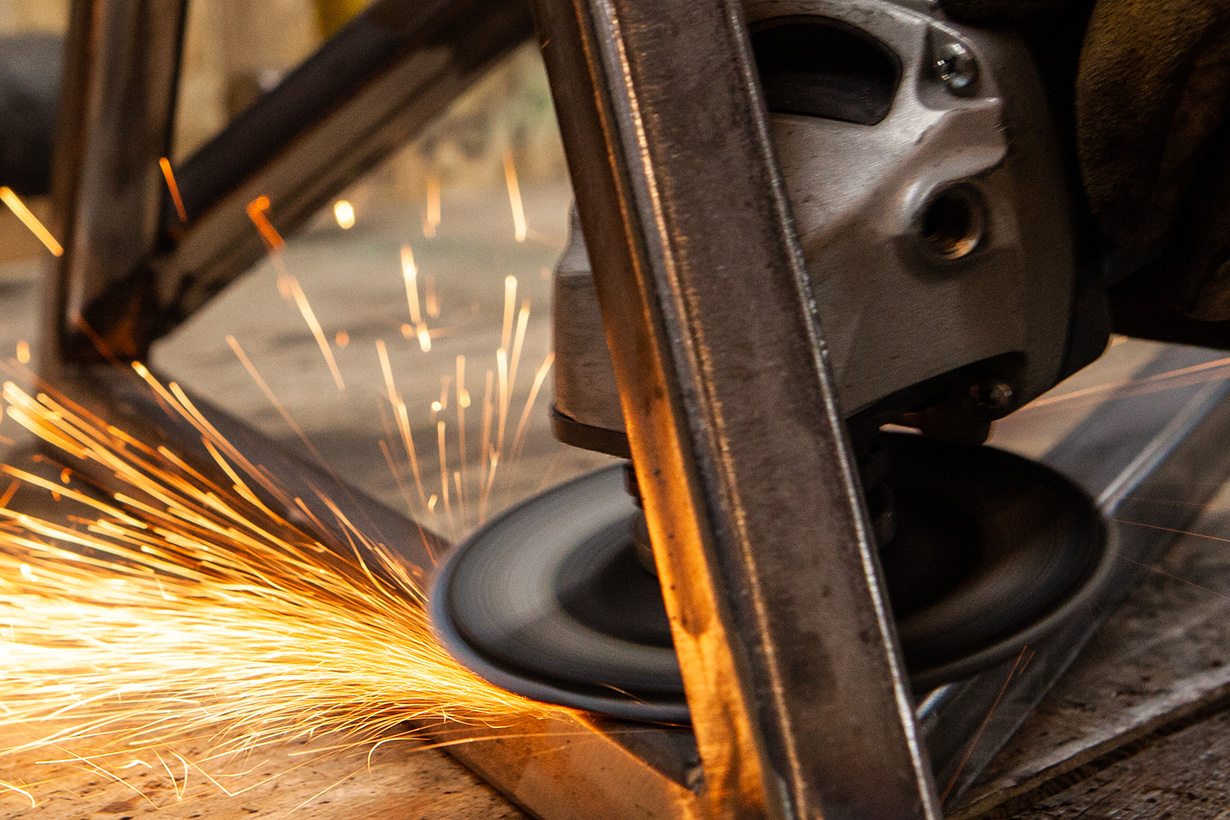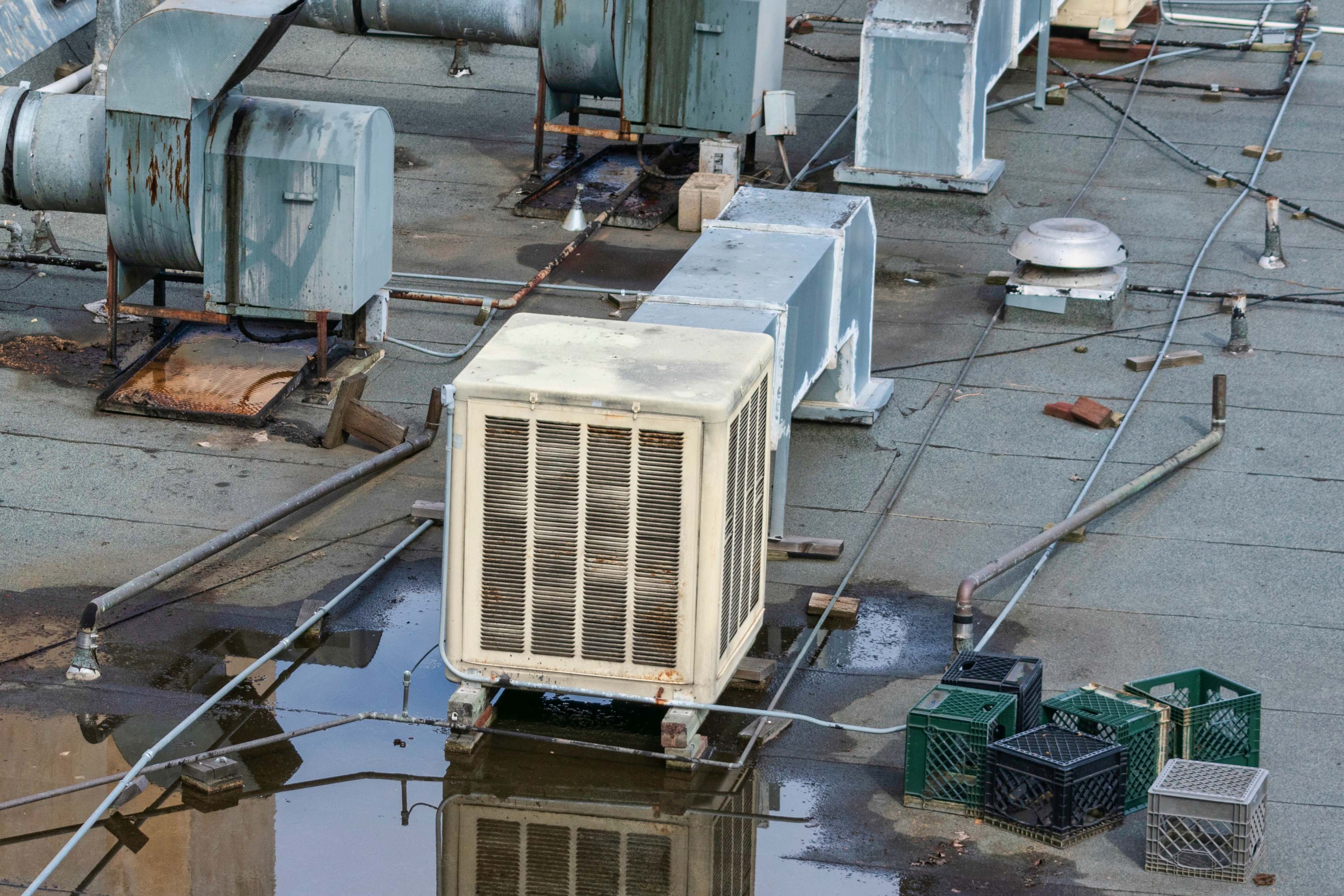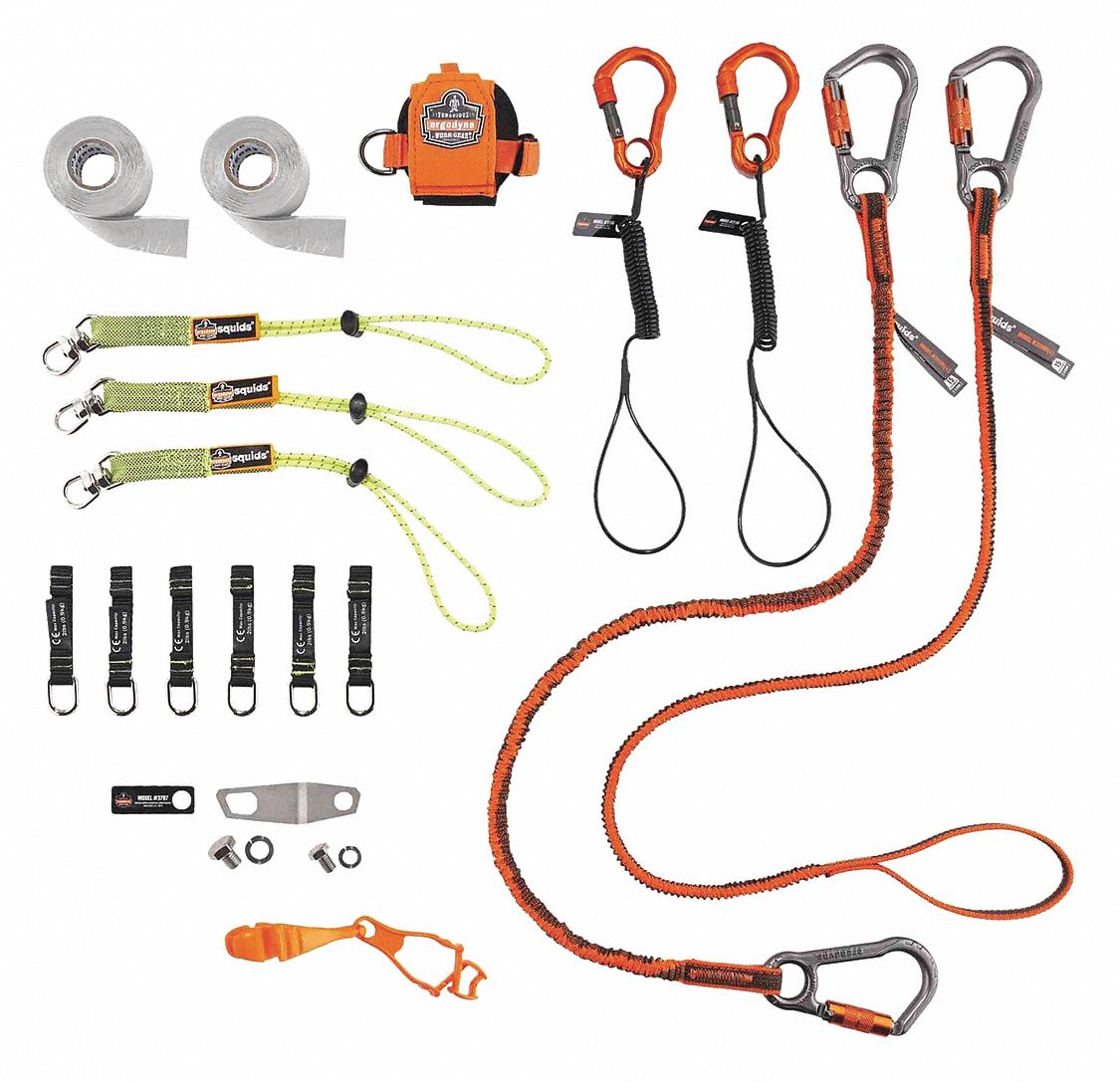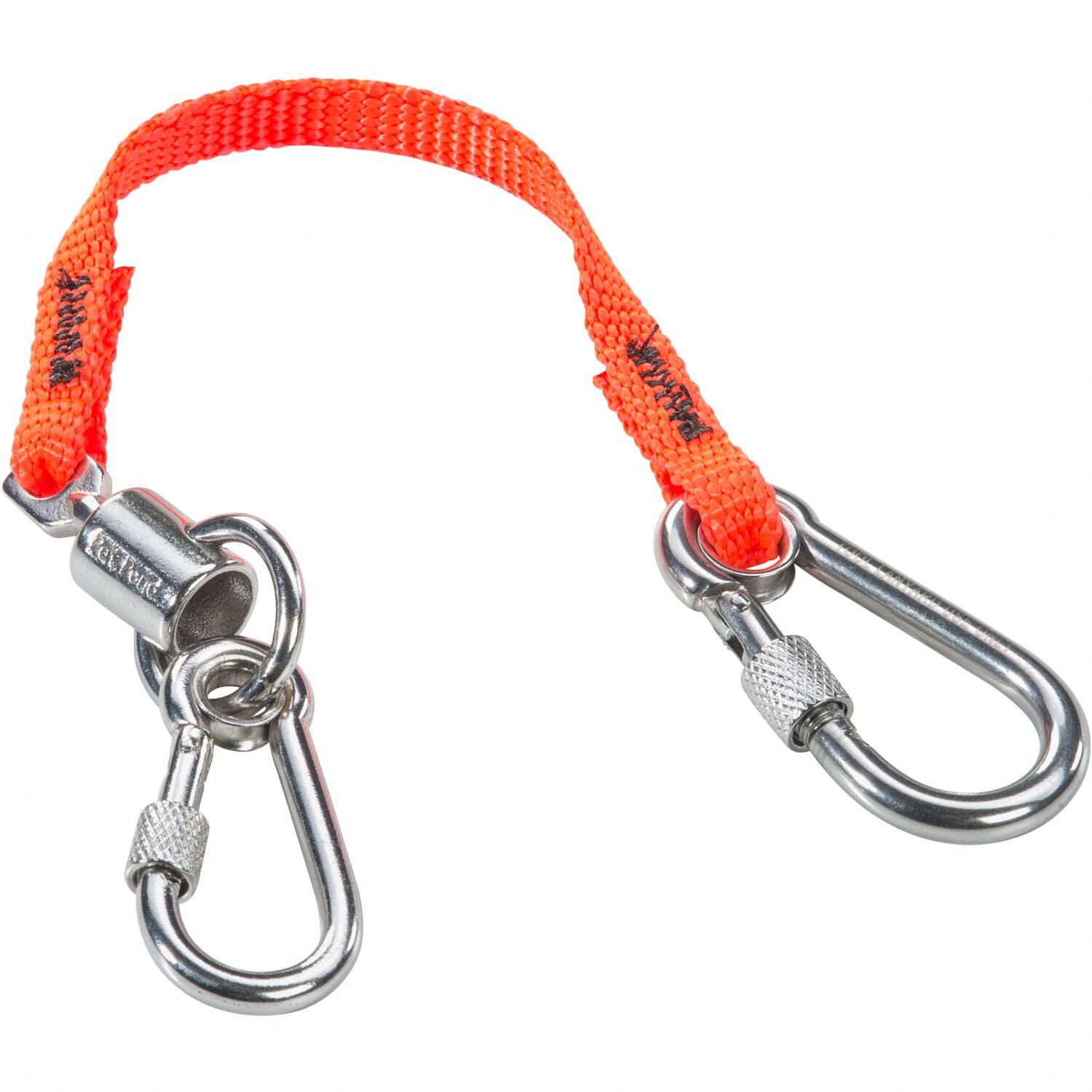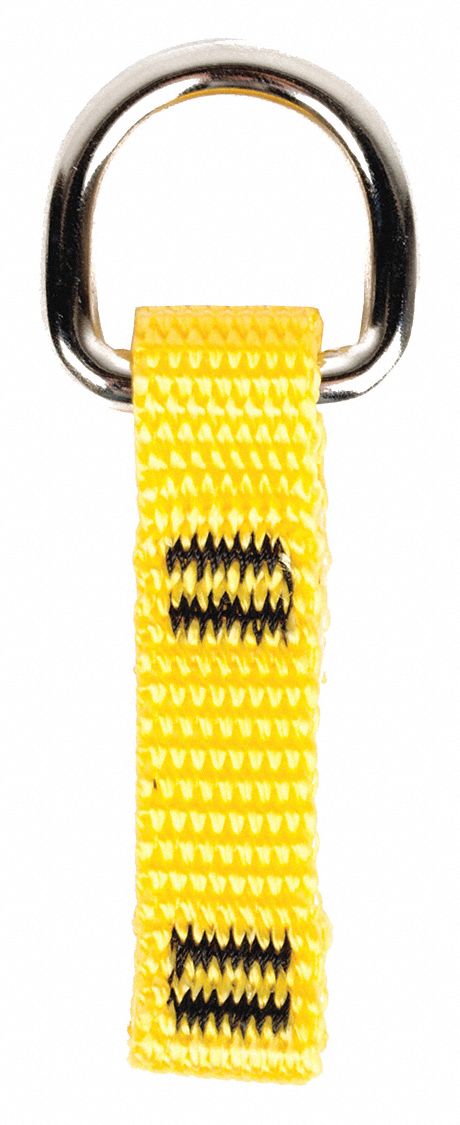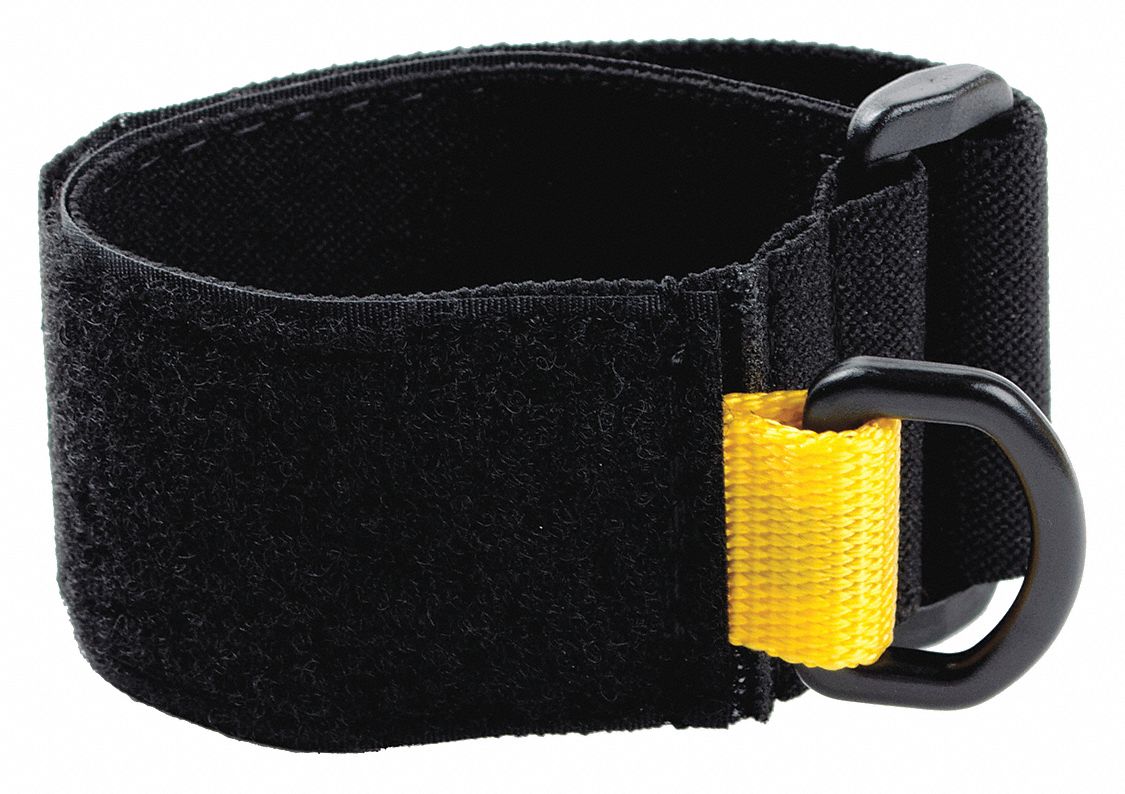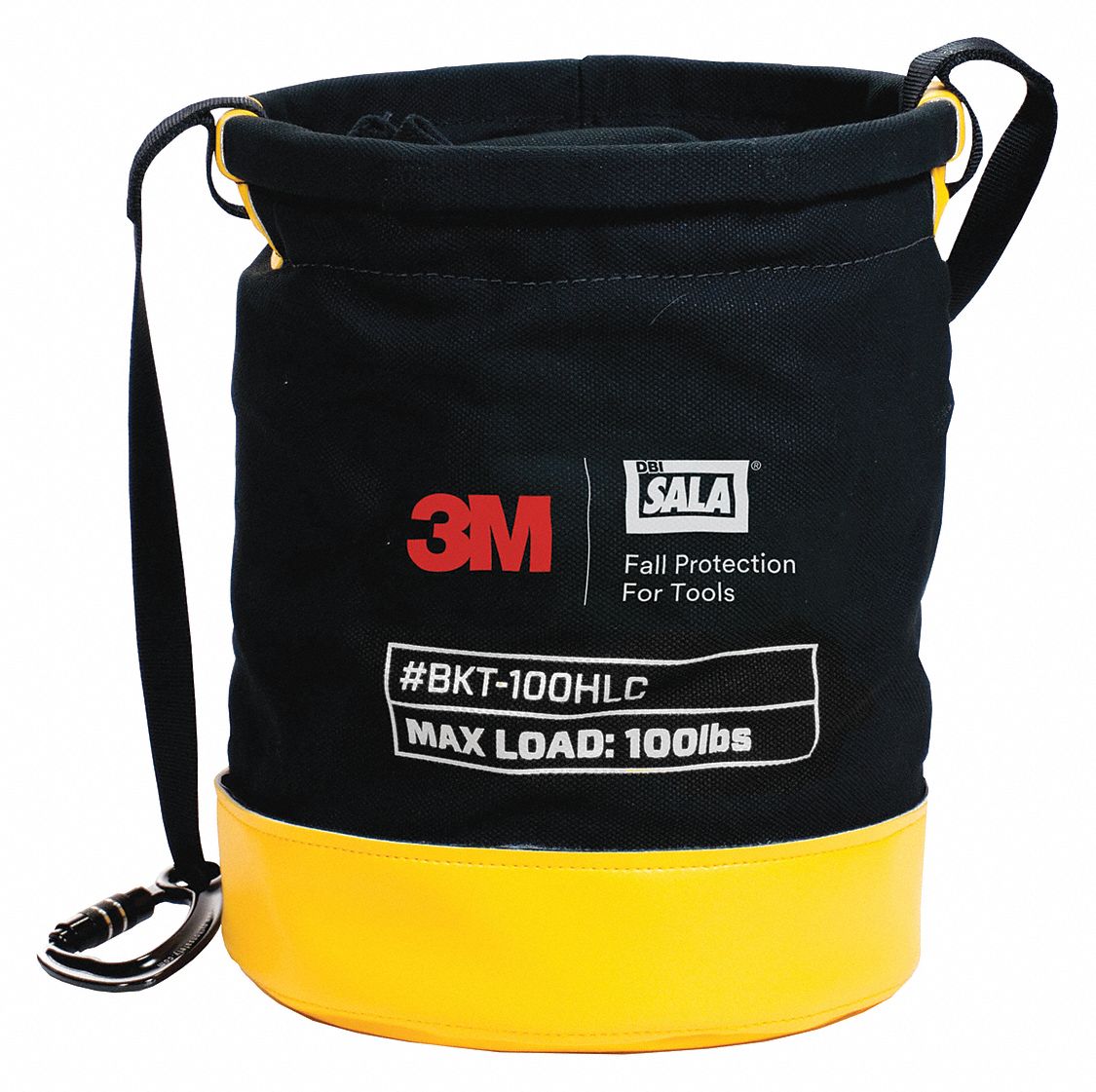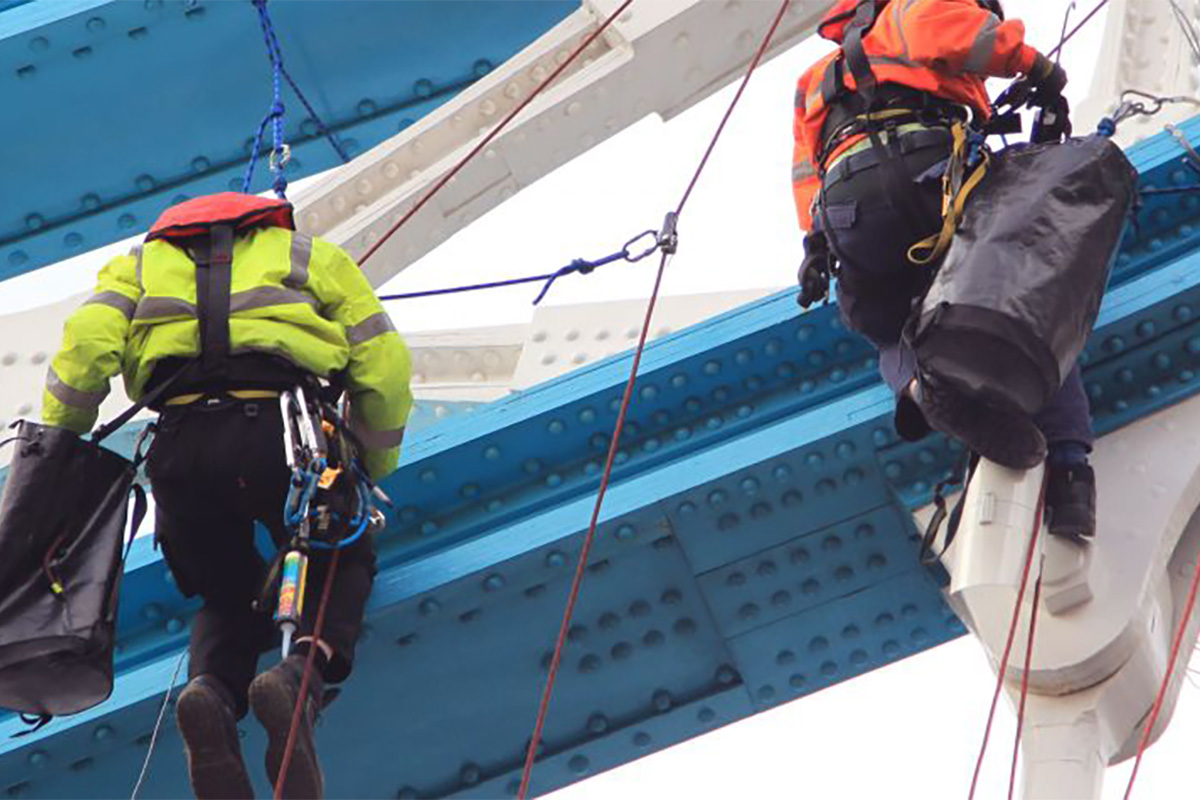

How To Identify and Prevent Dropped Object Hazards
By Grainger Editorial Staff 11/17/23
Dropped objects are a serious hazard on worksites where people operate at height—even small tools can cause major injuries. This article explains what qualifies as a dropped object, outlines prevention strategies and highlights safety gear like tool tethers and containers to help reduce risks.
Working at height is dangerous. Construction, steel-working, roofing, tree trimming and firefighting are just a few of the professions that frequently involve working around unprotected edges with drops of 4 feet or more, where a fall can cause have serious or even fatal consequences.
But falls aren't the only danger when people are working at height. It's important to remember that falling objects, like tools or hardware, are a significant hazard, too. Dropped objects are estimated to cause an OSHA-recordable injury every 10 minutes.
What Exactly Is a Dropped Object?
For safety professionals, the term "dropped object" has a specific technical meaning. A dropped object can be one of two things:
- An object that falls from a height by its own weight and gravity
- An object that falls from a height due to contact with an energy source
In other words, a dropped object can be something that someone drops – but it can also be something that falls after it gets dislodged from its resting place or mounting position. In this sense, dropped objects can include things like tools or equipment left behind after a task, as well as equipment mounted in elevated locations that could fall because of movement or environmental conditions.
Reducing the potential for dropped object accidents is an important part of any safety program where people are working at elevated heights. OSHA standards for construction (1926.451, 1926.501) and general industry (1910.28) require employers to mitigate dropped object hazards.
How a Little Thing Can Be a Big Hazard
You might be surprised by how dangerous even a small dropped object can be. According to Dropped Object Prevention Scheme (DROPS), an industry work group, objects that weigh less than three pounds can be fatal when they fall from a height of just 30 feet. As things fall farther, they move faster, resulting in more damage to whatever gets in their way.
The chart below shows the consequences of dropped objects of specified weights from different heights:
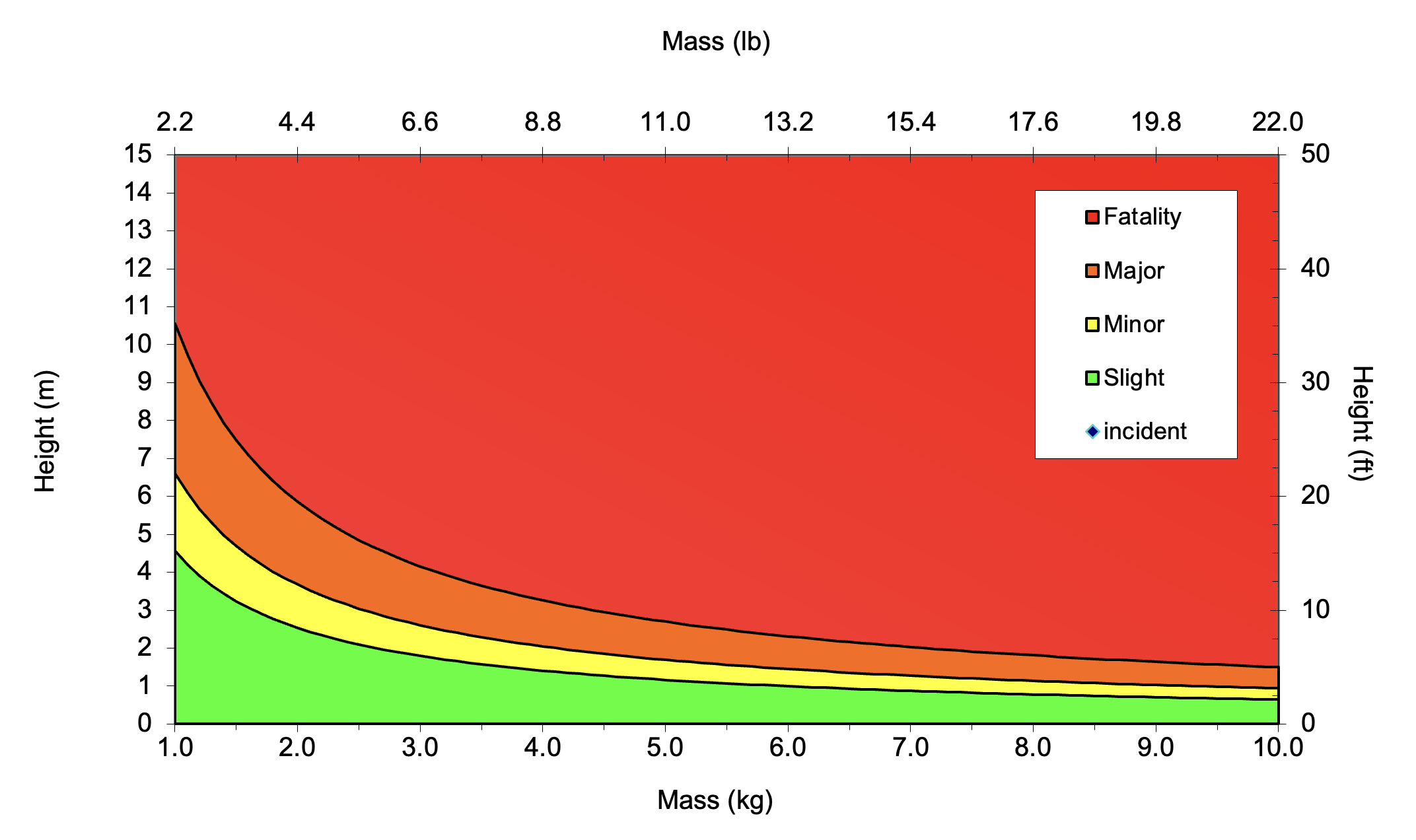

Source: dropsonline.org
What Can You Do About It?
There are many things you can do to help minimize dropped object incidents. Every jobsite is different, with its own particular hazards. Establishing your own prevention plan that includes inspections before and after working shifts can help you identify potential areas of risk. Here are some steps to consider:
- Take note of particular weather conditions that can elevate risk.
- Conduct regular hazard hunts.
- Create an easy system for reporting all incidents to help you track trends and locate specific areas where dropped object risks are greater.
- Promote active participation in your prevention program and reward employees who participate regularly.
Dropped-Object Safety Equipment
You can also use tool tethers and containers designed for dropped-object safety. For equipment that meets voluntary standards developed by the International Safety Equipment Association, look for the designation ANSI/ISEA 121-2018. Dropped-object safety equipment includes:
- Tool tethers that attach to anchor points on structures or people and attachment points on the tools.
- Complete tool tethering kits.
- Pouches, transport buckets and other dropped-object safety containers that close to prevent the things inside them from falling out.
These are just a few suggestions to help you get started on your own dropped object prevention program. The first and most important step is to recognize and fully understand the true dangers of dropped objects on the worksite. Every step you take toward prevention can help reduce the impact of dropped object incidents on workplace safety and productivity.
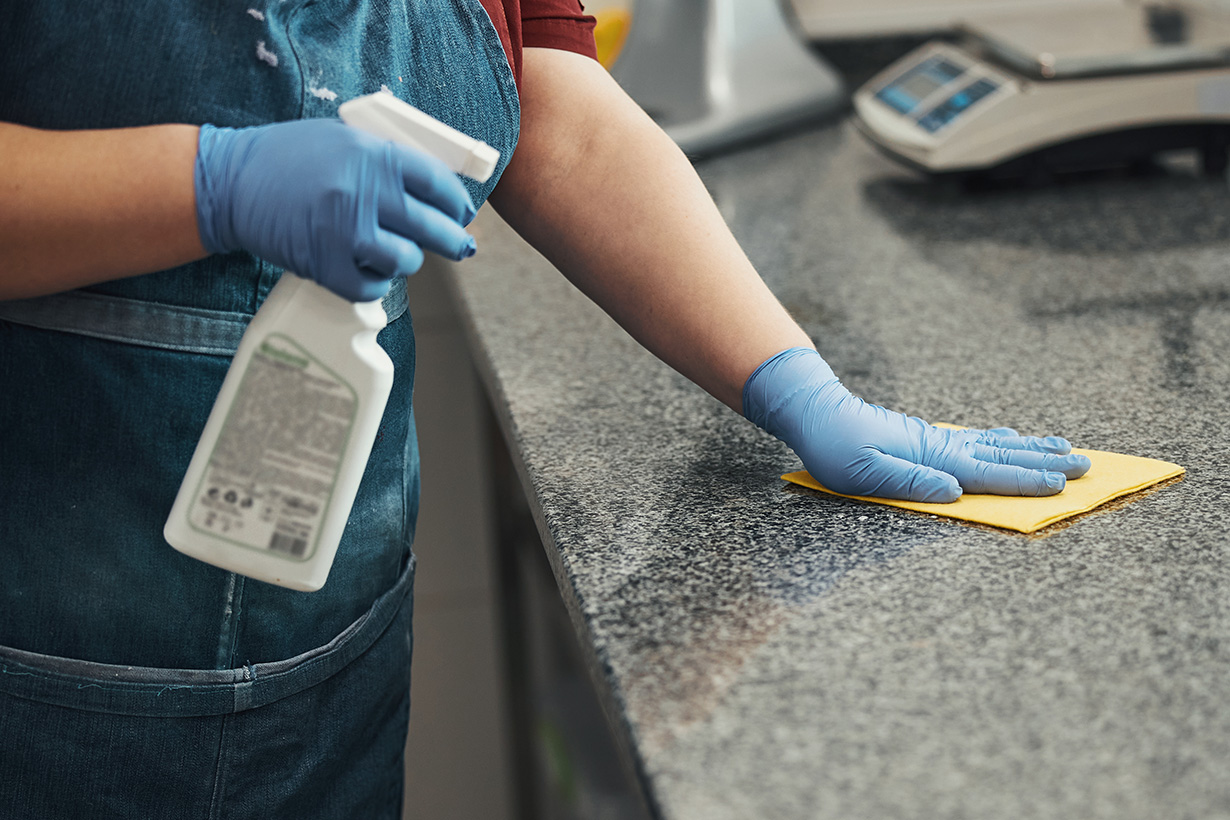
Sustainability
Understanding Nitrile and Biodegradability
Purchasing managers responsible for meeting their organization's sustainability goals should dig a little deeper when they come across product descriptions with environmental claims.
![]() Our Latest KnowHow
Our Latest KnowHow

Understanding Nitrile and Biodegradability
Purchasing managers responsible for meeting their organization's sustainability goals should dig a little deeper when they come across product descriptions with environmental claims.
The information contained in this article is intended for general information purposes only and is based on information available as of the initial date of publication. No representation is made that the information or references are complete or remain current. This article is not a substitute for review of current applicable government regulations, industry standards, or other standards specific to your business and/or activities and should not be construed as legal advice or opinion. Readers with specific questions should refer to the applicable standards or consult with an attorney.


